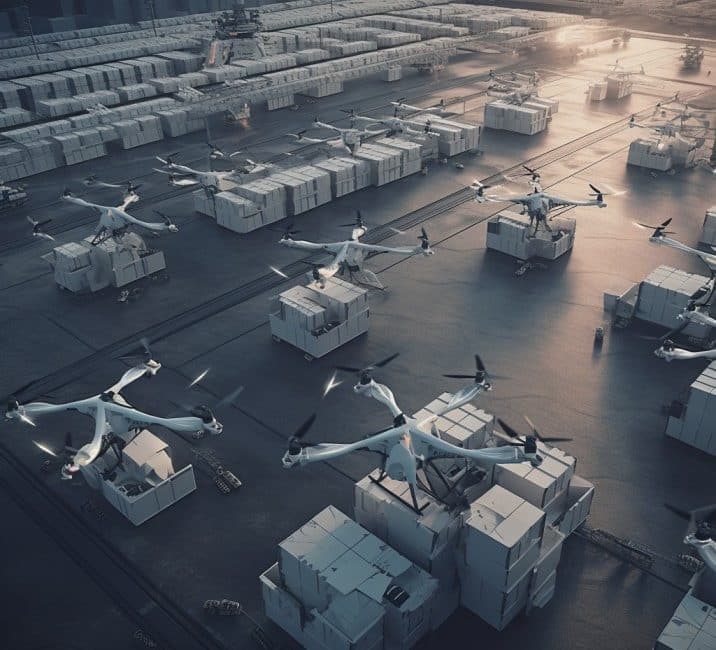The rise of delivery drones has indeed been a transformative development in the logistics industry. In this article, we will explore how delivery professional drones are revolutionizing the way goods are transported and delivered, the benefits they offer, and the challenges that still need to be addressed.
- Efficiency and Speed: Delivery professional drones can significantly improve the speed and efficiency of the delivery process. Drones are not constrained by traffic or road conditions, allowing them to reach their destination much faster than traditional delivery methods. This is particularly beneficial for urgent or time-sensitive deliveries, such as medical supplies or emergency response situations.
- Cost-Effectiveness: Delivery professional drones have the potential to reduce delivery costs for businesses. Traditional delivery methods often involve significant expenses, such as fuel, labor, and vehicle maintenance. Drones, on the other hand, have lower operational costs, requiring less fuel and manpower. This cost-effectiveness can benefit both businesses and consumers, potentially leading to lower prices for delivered goods.
- Accessibility to Remote Areas: Delivery professional drones can reach remote or inaccessible areas where traditional delivery methods face challenges. This is especially valuable in rural or geographically diverse locations, where delivering goods can be time-consuming and costly. Drones can bridge this gap, bringing essential supplies, medications, or even food to areas that were previously difficult to reach.
- Environmental Impact: Delivery drones have the potential to reduce the carbon footprint associated with traditional delivery methods. By eliminating the need for large delivery vehicles, professional drones minimize emissions and contribute to a more sustainable logistics system. This aligns with the growing demand for eco-friendly practices and supports efforts to combat climate change.
- Last-Mile Delivery: Last-mile delivery, the final leg of the delivery process from a distribution center to the customer’s doorstep, is often the most expensive and logistically challenging part of the supply chain. Drones can address this challenge by efficiently delivering packages directly to customers’ homes or businesses, bypassing traffic congestion and improving overall delivery speed.
- Regulatory and Safety Considerations: While delivery professional drones offer numerous benefits, there are still regulatory and safety considerations that need to be addressed. Governments and aviation authorities have implemented regulations to ensure the safe and responsible use of drones. These regulations cover aspects such as flight restrictions, weight limits, and pilot certifications. Adhering to these guidelines is crucial to ensure the safe and reliable operation of delivery drones.
- Weather Conditions and Payload Limitations: Delivery professional drones may face limitations in adverse weather conditions, such as strong winds, heavy rain, or snow. These conditions can affect flight stability, range, and payload capacity. Overcoming these challenges by developing drones that can withstand varying weather conditions and carry larger payloads will be essential for widespread adoption of delivery drones.
In conclusion, the rise of delivery professional drones has the potential to transform the logistics industry by improving efficiency, reducing costs, enhancing accessibility, and minimizing the environmental impact of traditional delivery methods. While there are still regulatory and technical challenges to overcome, the ongoing advancements in professional drone technology and the increasing acceptance of professional drones in the logistics sector indicate a promising future for delivery professional drones. As these challenges are addressed, we can expect to see even greater integration of delivery professional drones into our daily lives, making our supply chains more streamlined and efficient.




